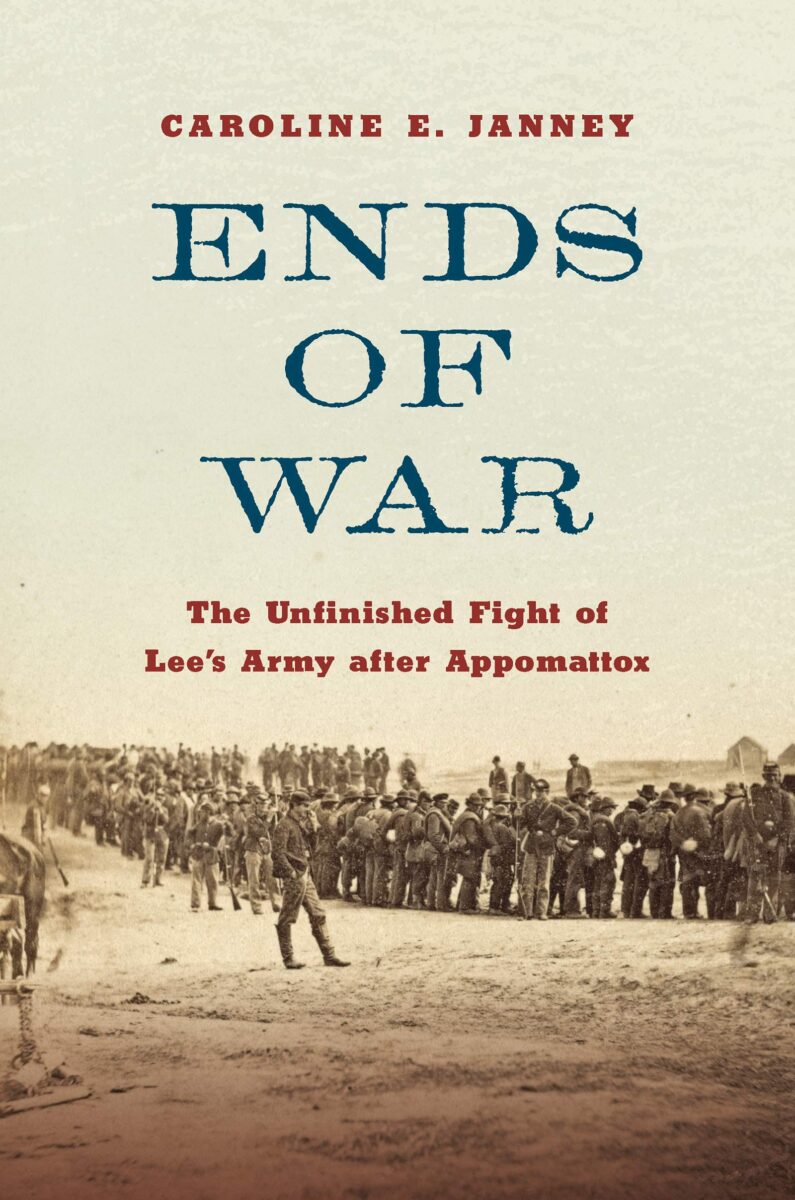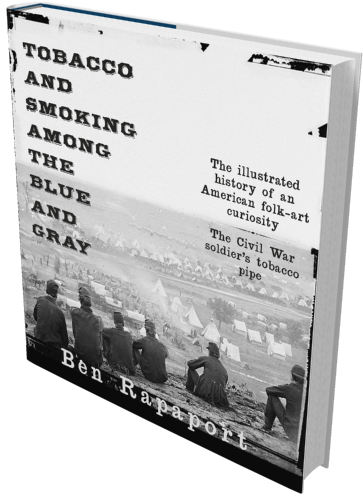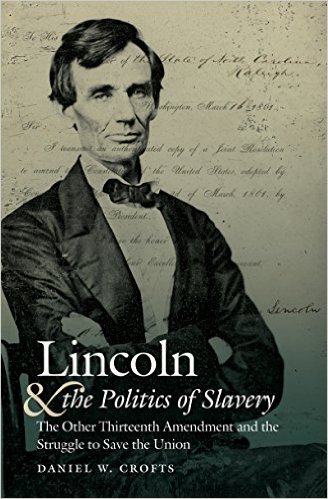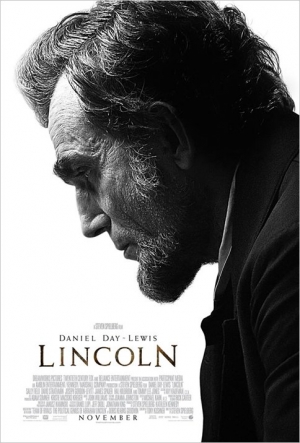Caroline E. Janney carefully states that Ends of War “neither examines nor excuses the motivations or purposes of Confederates as soldiers.” Instead, “it explores the war’s ending as a pivotal period that shaped all that followed, from Reconstruction to the present” (6). Rather than “serving as a clear ending to the conflict, the surrender of Lee’s army brought into stark relief many of the legal, social, and political questions that had plagued the war from the beginning” and “what followed the surrender would offer the first real test of how a democracy might end a civil war” because it could show the lasting fissures in that democracy (3).
Chapters one and two examine the uncertainty of surrender for Confederate forces. Janney meticulously details how Ulysses Grant’s experiences in the classroom, in battle in the U.S. War with Mexico, and with previous surrenders of other rebel armies, affected the terms he negotiated with Robert E. Lee. Influenced by President Lincoln’s Proclamation of Amnesty and Reconstruction, Grant did not want to inflict “unnecessary humiliation” on the soldiers. Janney notes that his “most original and noteworthy” contribution to the terms was allowing Confederates “to return to their homes undisturbed, as long as they did not break laws in force locally,” which, as the author states, “inadvertently opened the door for a much broader interpretation of paroles” that would soon be problematic (27). Lee contributed a clause to the parole terms, “‘until properly exchanged,’” which “left open another outcome” than the war’s end (27-28).
In chapters three through six Janney continues to weave her argument. She begins to explain how Appomattox laid the foundations of the Lost Cause. One of the most interesting chapters, “Procession of Defeat,” discusses the pass system created for the defeated Confederates, the dynamics of power, and what the passes represent to different people. (Given how detailed the terms of the passes were, a photo of a pass would have been welcome in the book). Janney systematically demonstrates the creation of parole policies, citing earlier cases to show they were not conjured “out of thin air” but was “based on precedent established during the war” (102).
Chapters seven through nine discuss how the United States reclaimed territory, as well as the struggles of William Tecumseh Sherman and Joseph E. Johnston in negotiating surrender terms. “A Rebel Capital No More” discusses the bedlam in Richmond once refugees began streaming into the city. Janney describes how African Americans and Unionists there were happy, but local former Confederates were not because the government would no longer provide rations or transportation to help Confederates home. In chapter nine, Janney skillfully connects the process and procedures of the United States military with politics, tracking Sherman’s terms and discussion of them between Grant, Andrew Johnson, and the cabinet in Washington following Lincoln’s funeral. She describes the frustration over military terms needing political approval and the tightrope that leaders walked because of terminology, since Sherman’s terms called into question the validity of the Confederacy as a nation.
Chapters ten and eleven consider the stories of Confederate soldiers arriving home and their struggle to get there with little to no food, hazardous conditions, and unclear rules. Janney discusses the tendencies of Confederate sympathizers to rationalize the actions of veterans taking livestock or raiding stores. They blamed the destruction on “shameless parties,” since it could not have been Lee’s or Johnston’s men. Janney points out that looting and plundering “could be forgiven” by townsfolk as “part of the social contract that implied soldiers, especially those who had given their all, were entitled to be fed” (172).
Chapters twelve through fourteen describe the visceral reactions of Unionists at seeing Confederates come home. Janey’s description of Confederate uniforms throughout this section assists the growing arguments about the relevance of material items; these uniforms represented treason and disloyalty to the United States. The wearer of a Confederate uniform in public was subject to punishment. Federal officials maintained that “parole was a military status” designating Lee’s soldiers as “prisoners of war”; Janney explains that if so, “the rebels held the status of alien enemies and therefore had no rights of citizenship” because the “oath, not the parole, proved necessary to restore the Confederates their rights as citizens” (190). Janney explains how pardons and the gift of amnesty were understood, pointing out that, “the Constitution had not defined amnesty or pardon” and that Attorney General James Speed called amnesty “an act of oblivion or forgetfulness, while a pardon served as a remission of guilt” (213). She also reminds us that not every Confederate was eligible for amnesty, as men in fourteen categories needed individual pardons. She states that countless rebels claimed, both then and later, that “taking an oath or applying for a pardon was not an admission of guilt,” demonstrating a fundamental miscommunication about amnesty and pardon (213-214). Janney also details the debate surrounding Lee’s fate and the arguments about whether they should “kill him, capture him, or parole him,” and Grant’s desire to avoid more bloodshed and its consequences (224-225).
Chapter fifteen and the epilogue bring home Janney’s meticulous work. The last chapter, “Rebels Still,” illustrates a foundational component of the Lost Cause: the claim that “Confederate soldiers had not been defeated fairly but simply overwhelmed by Union armies packed with unworthy foes” (242). Former Confederate soldiers, she shows, became more emboldened each passing day as they attacked Black Union soldiers and refused to follow rules. Janney concludes with the thought that U.S. military, local authorities, and civilians alike tried to “do what seemed best in that moment and in that place, however events might have unfolded, however misguided they may seem in hindsight” (254). Thus, Janney again hammers home her central premise that decision making was complex, with vast consequences and no perfect answer to fix what happened in the war. Janney concludes by acknowledging that disbanding the Army of Northern Virginia was only the beginning of decades of “retaliation against African Americans, defiance of meddlesome federal agents, and the election of Confederate leaders to state and national offices” (257).
This beautifully written and engaging book will make an excellent addition to any graduate or undergraduate classroom. It is a valuable contribution to the military and political history of the Civil War.
Shae Smith Cox is Assistant Professor of History at Nicholls State University.





